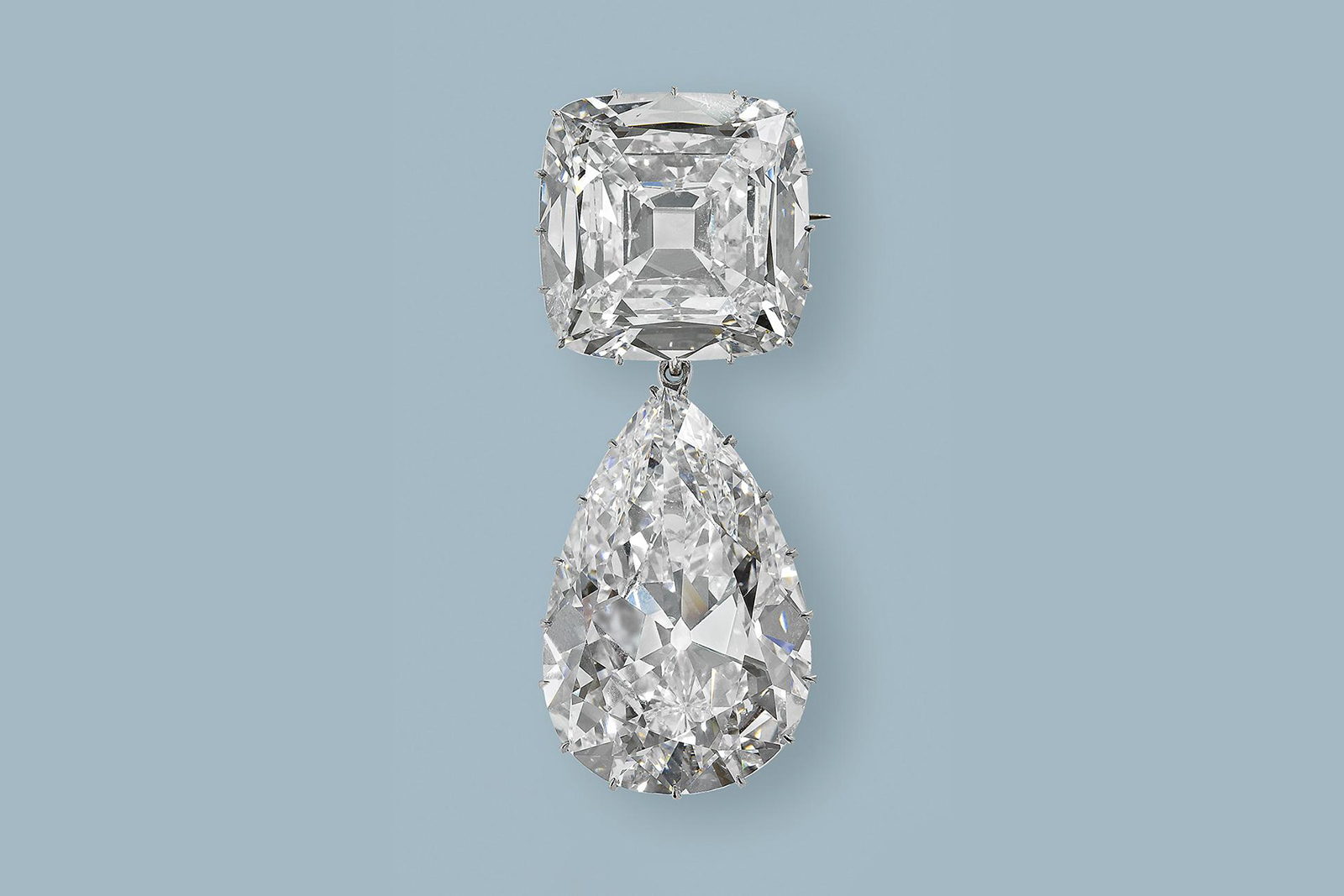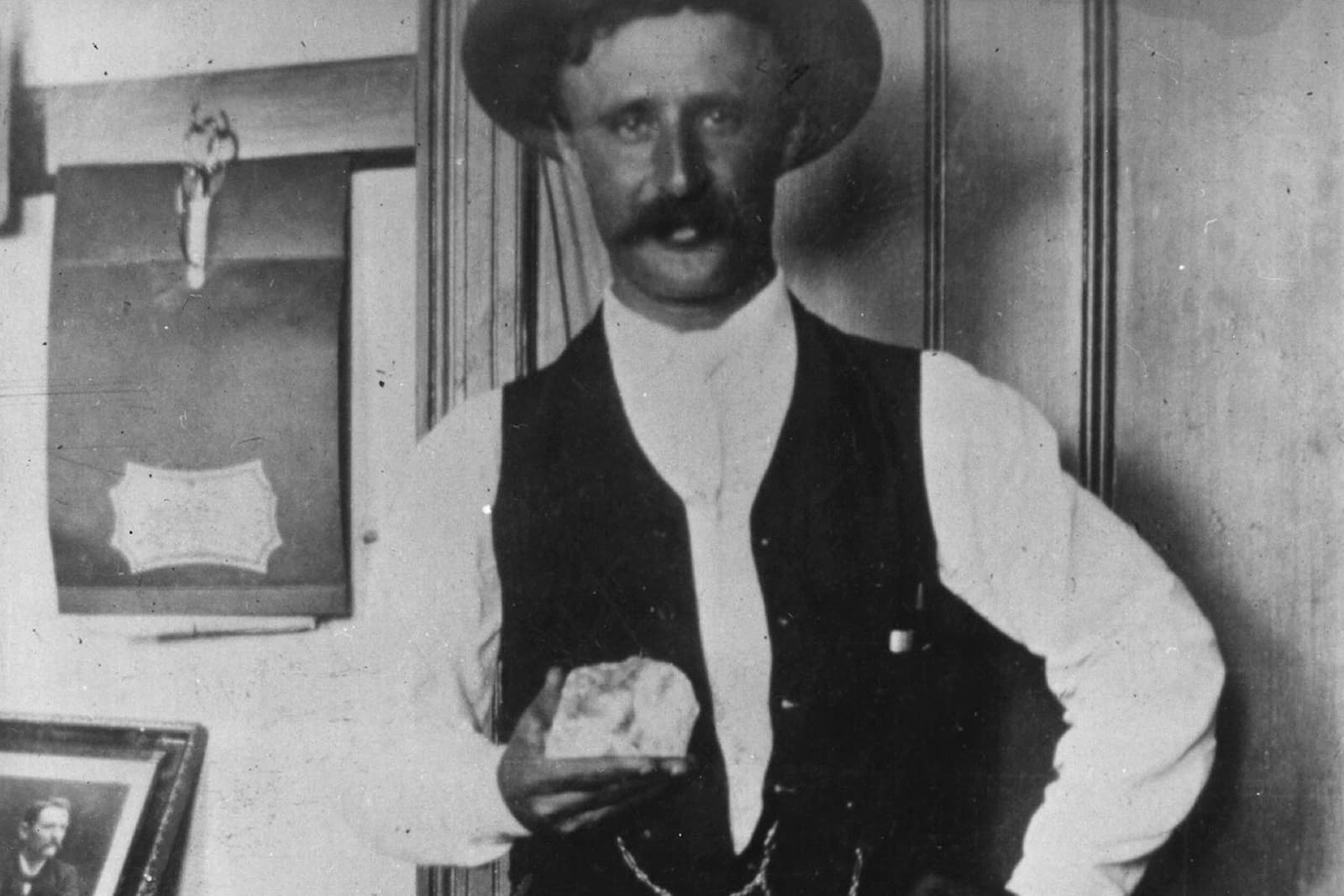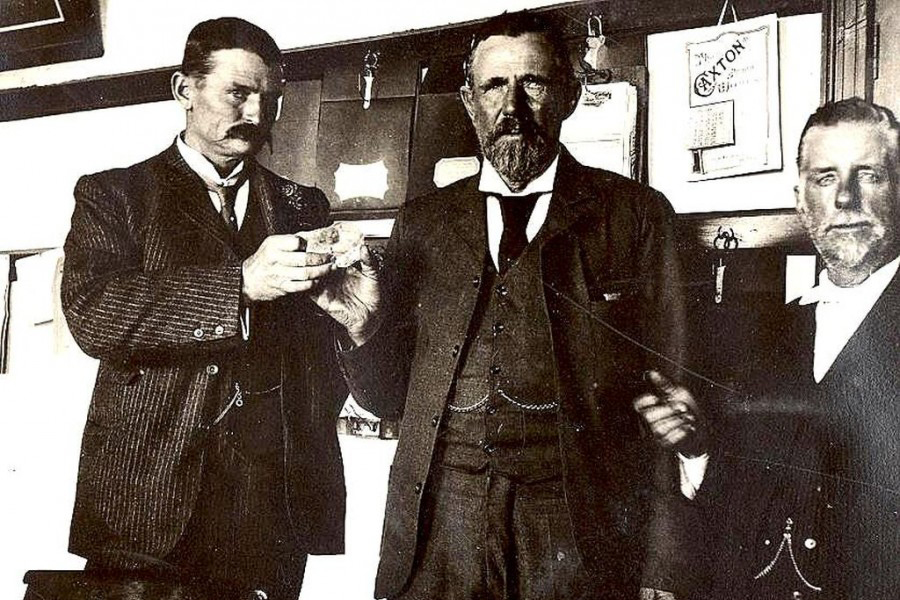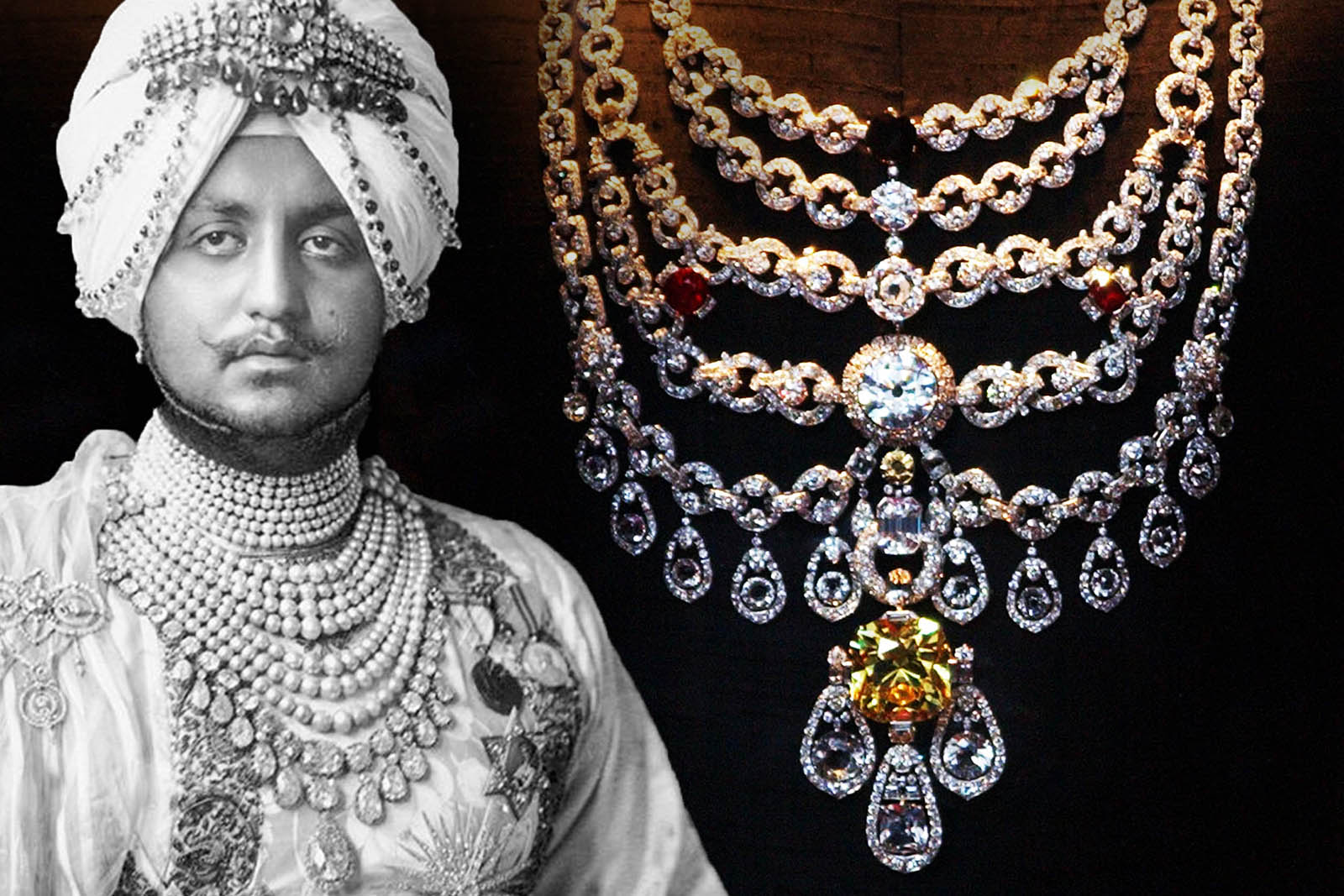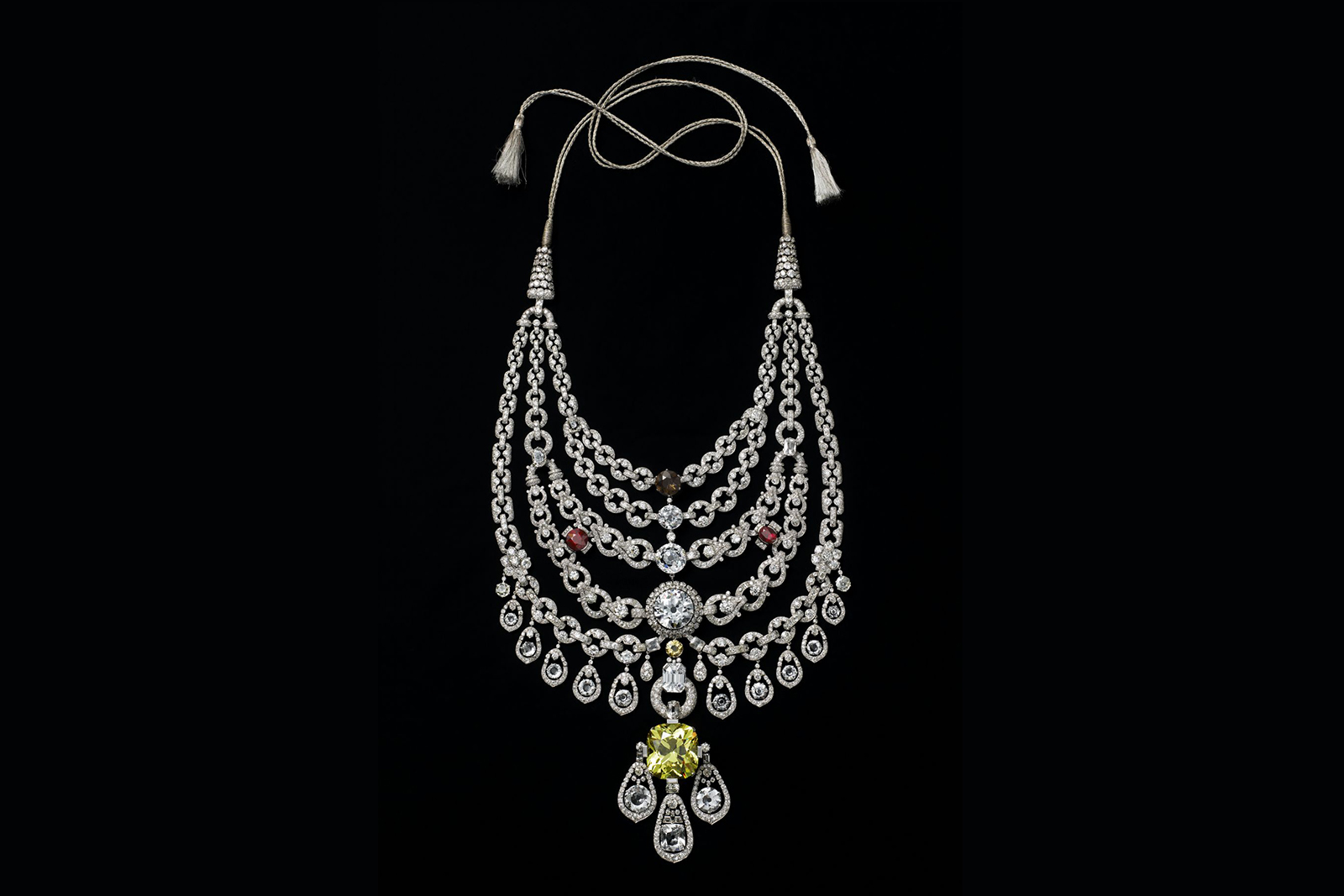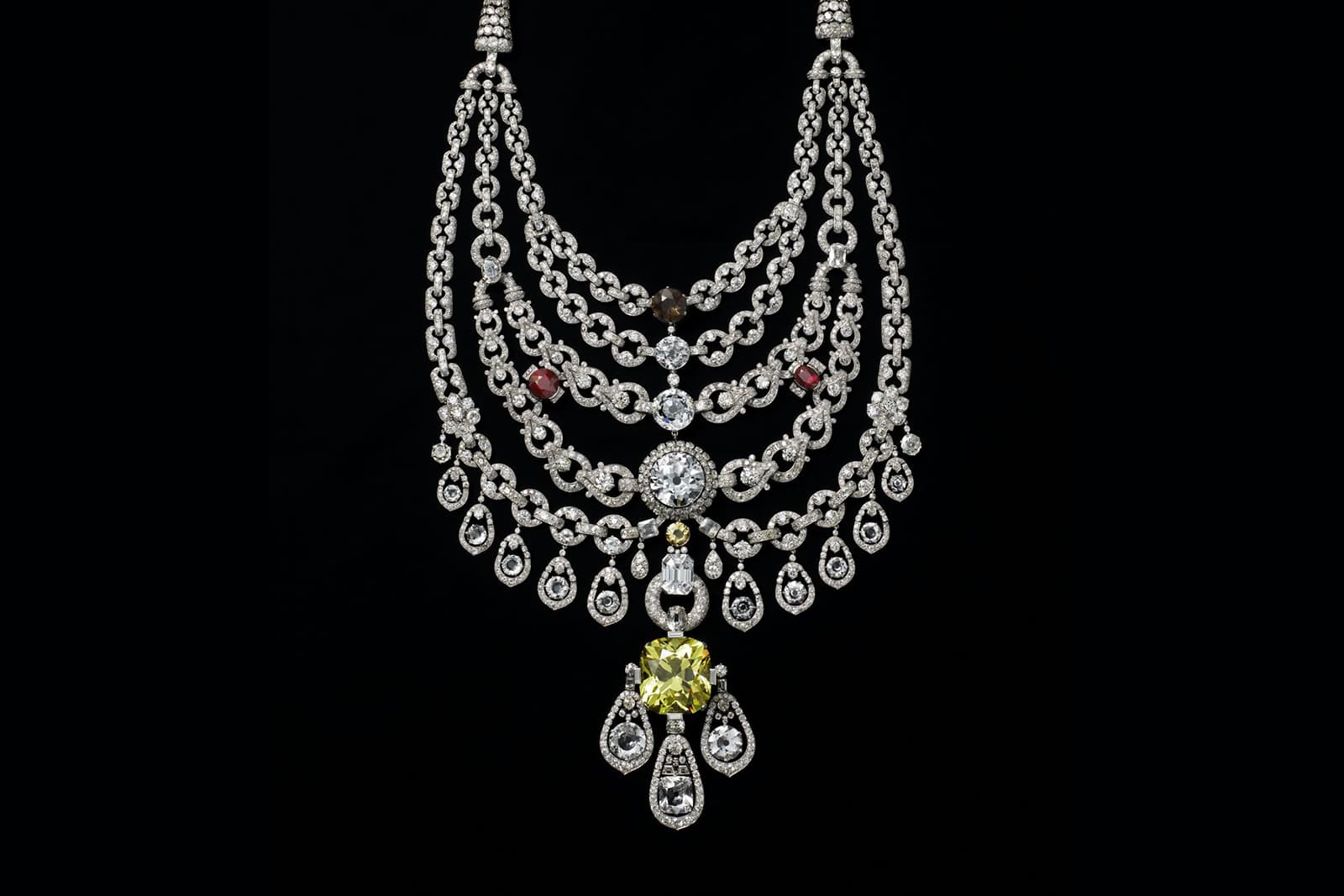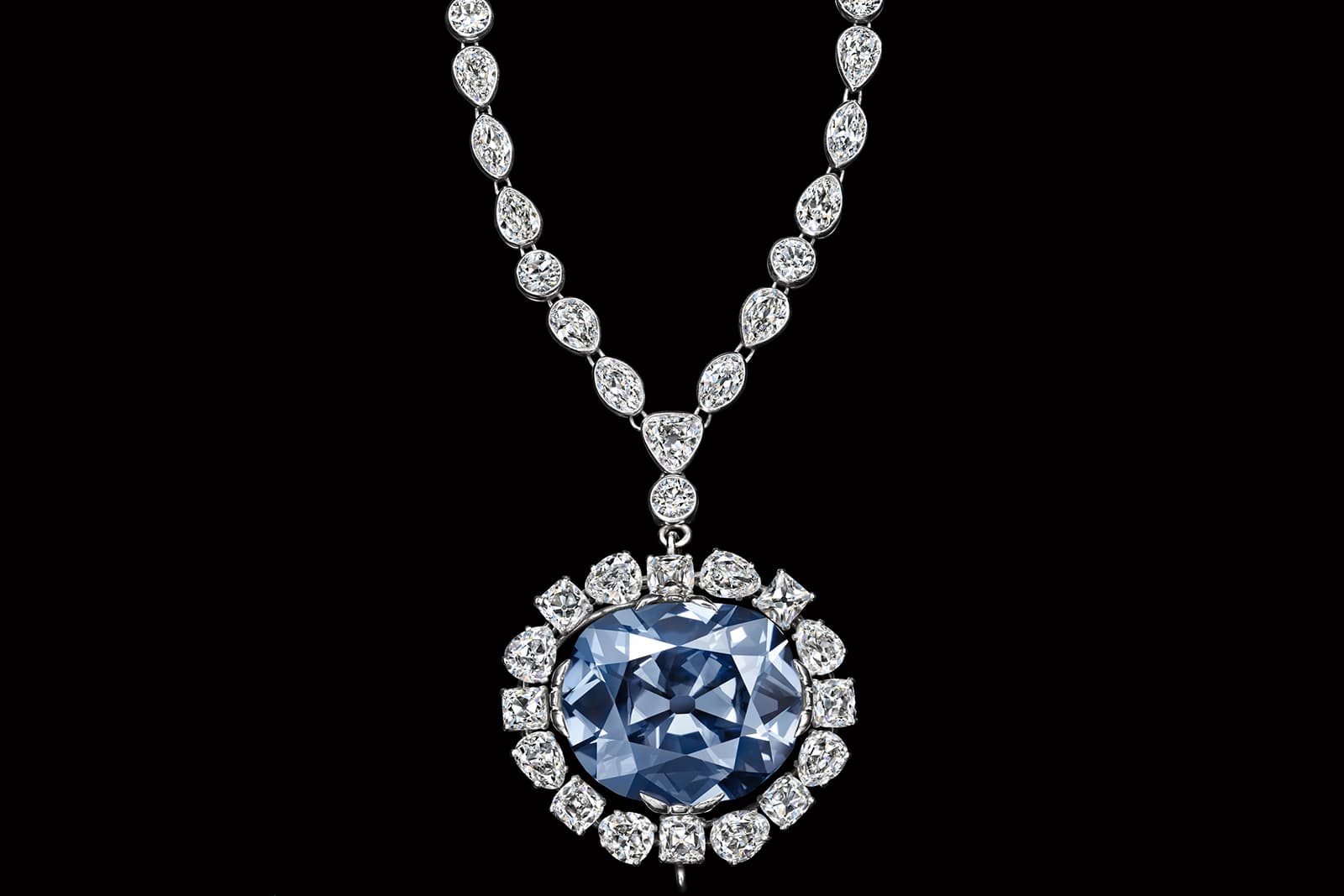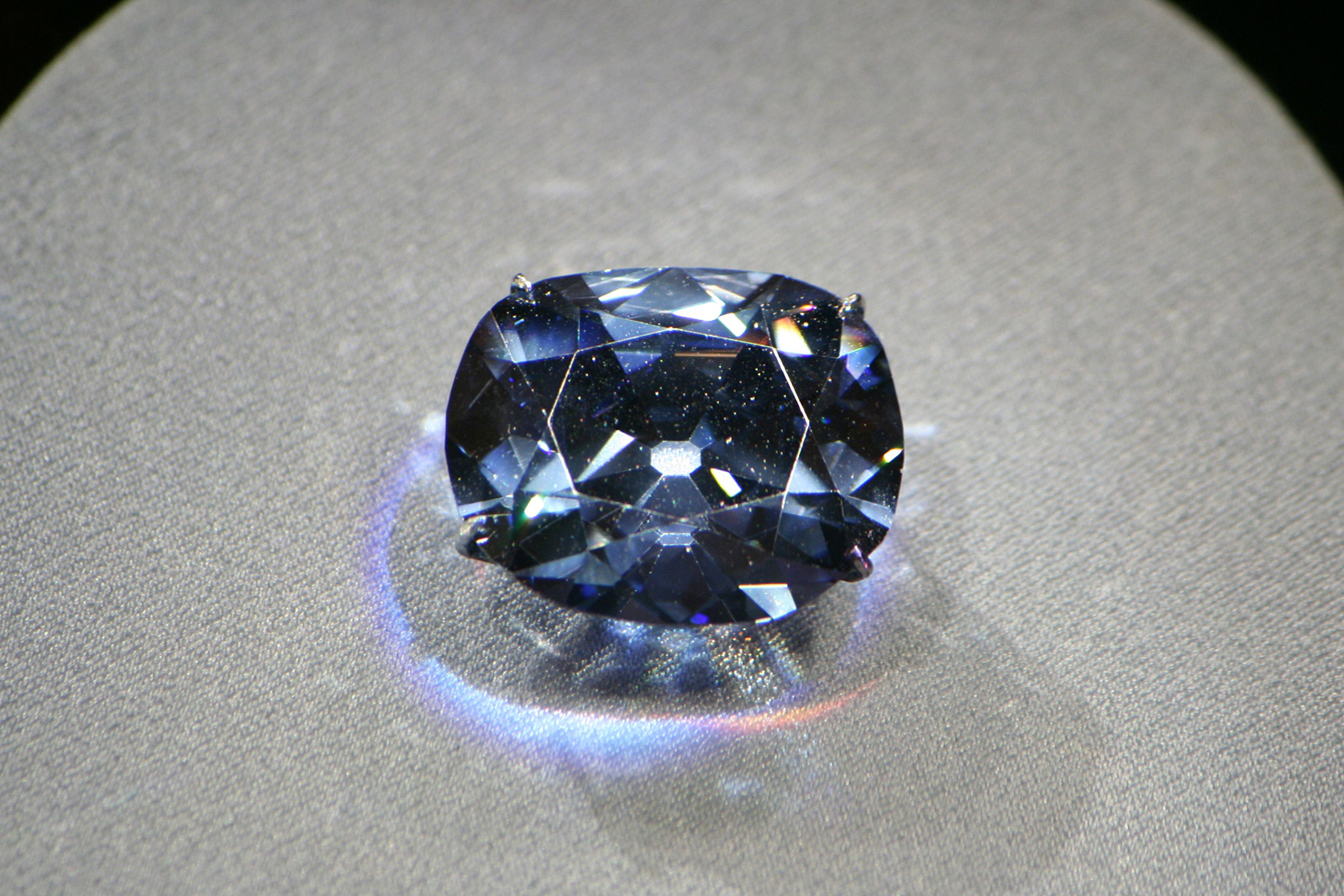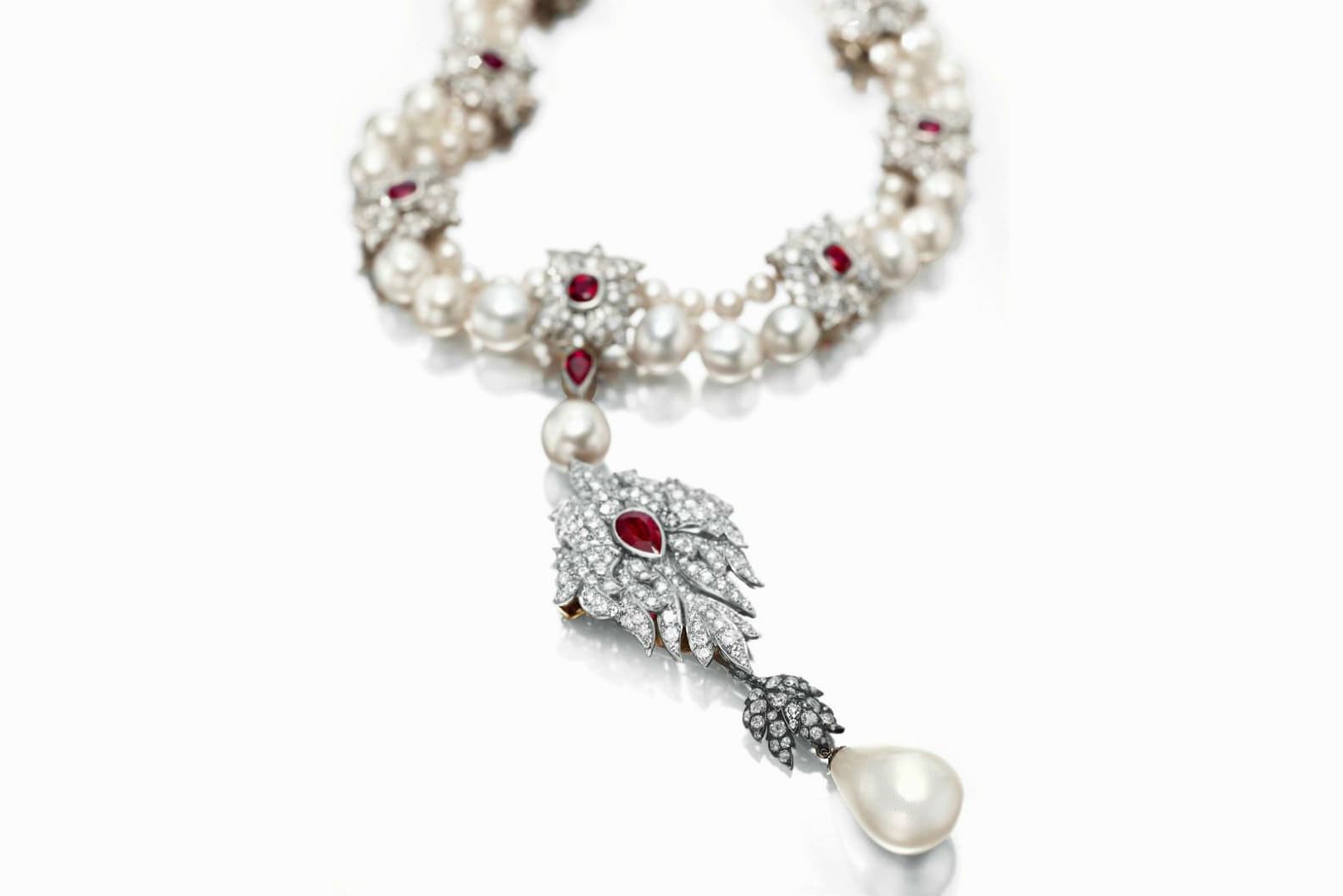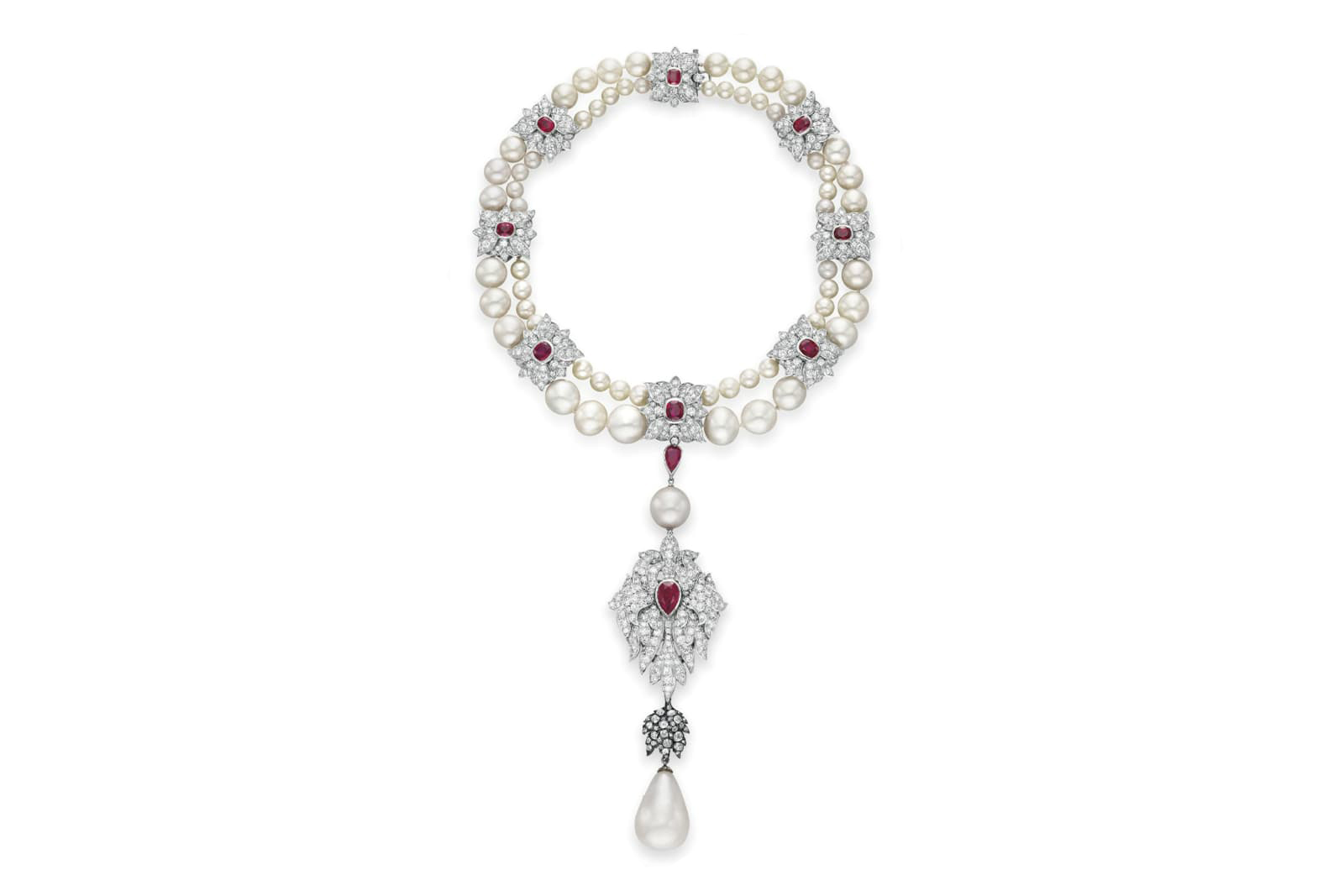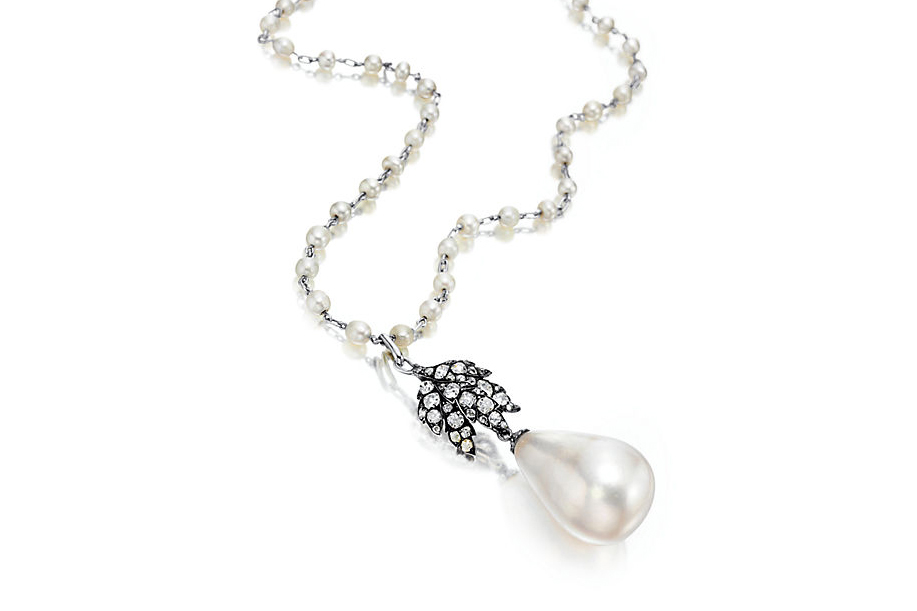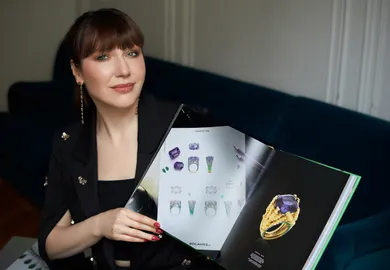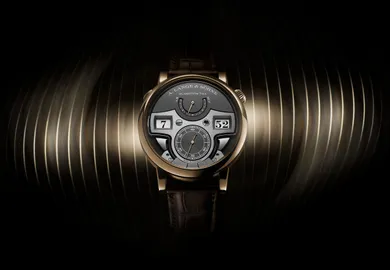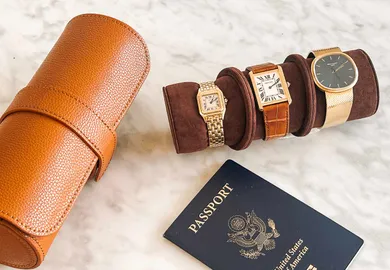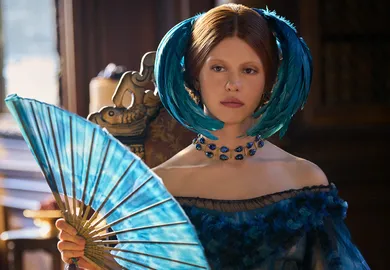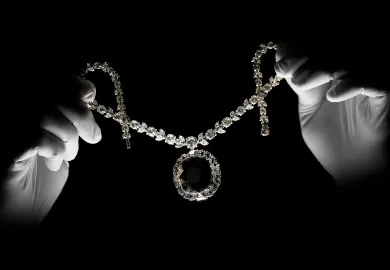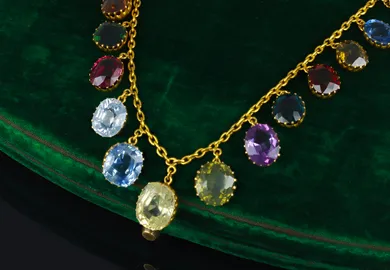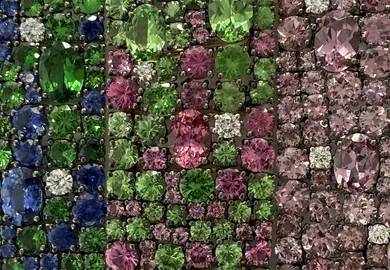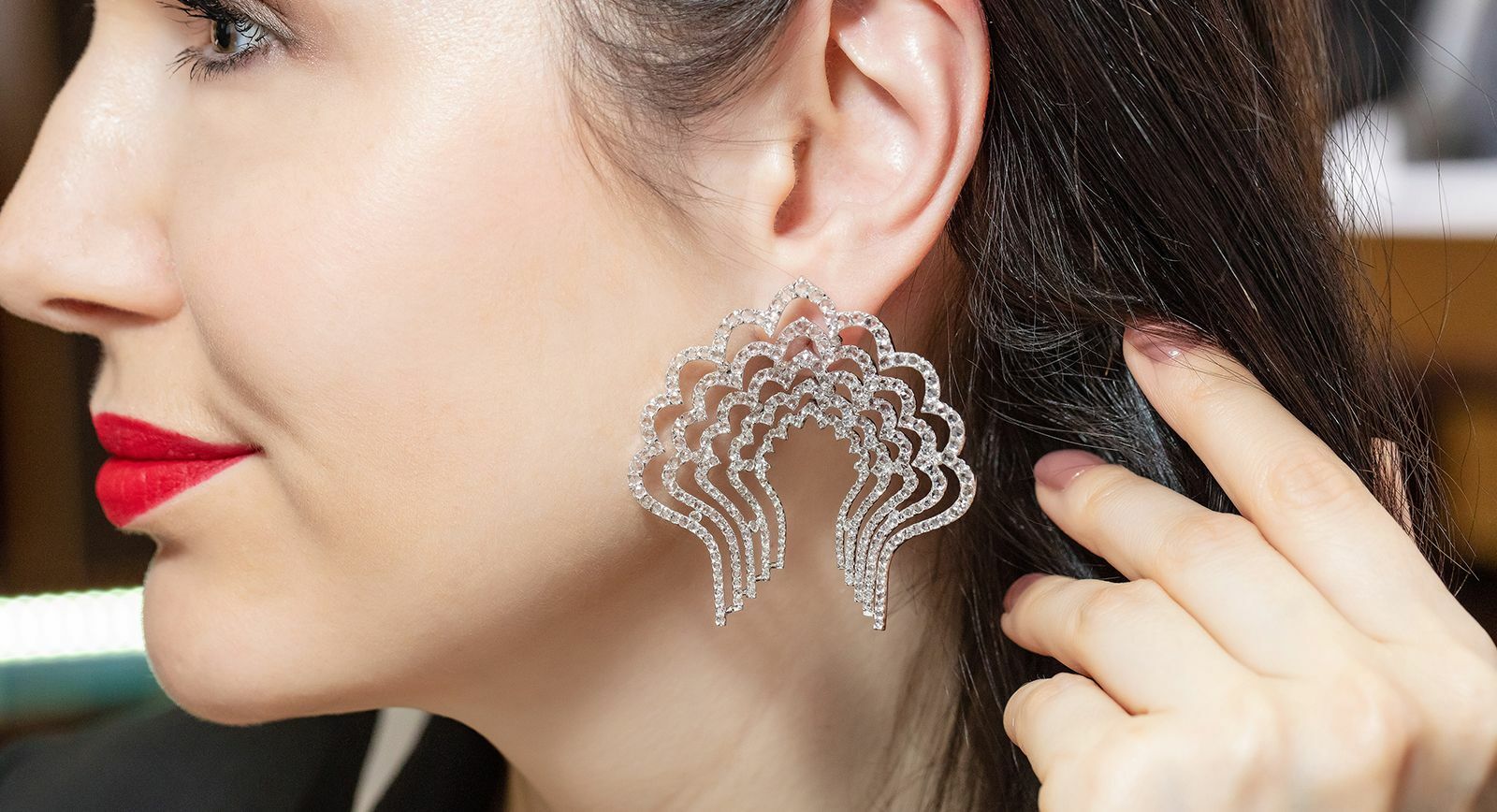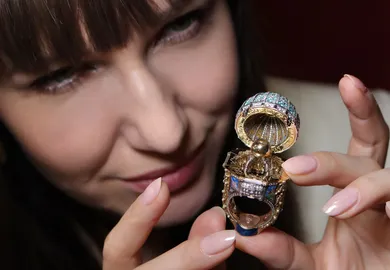
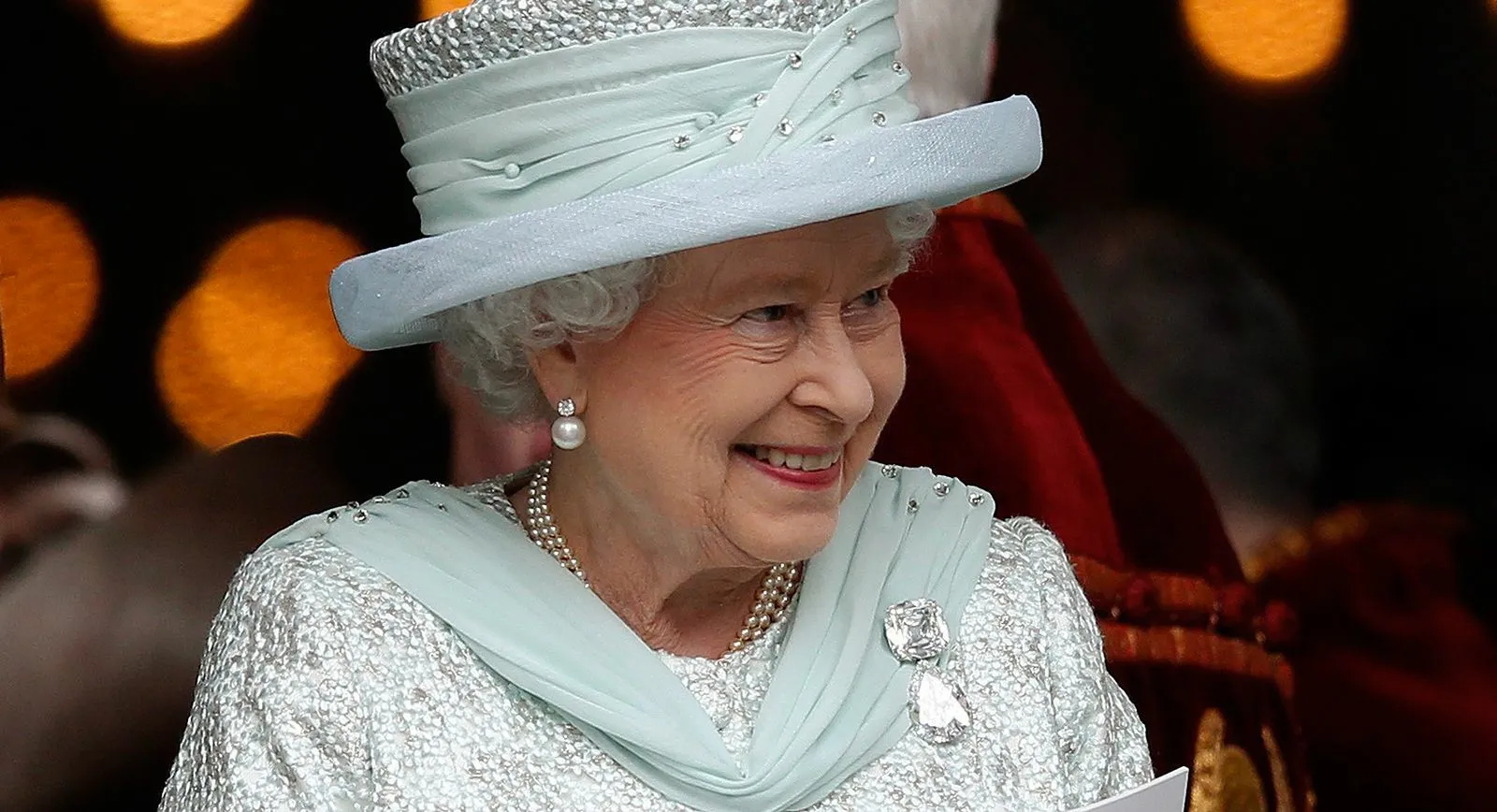
Royal Jewels: Five Stunning Historical Treasures that are still Spoken of to this Day
Modern jewellery is my weakness, but in my work, I also came across a huge amount of amazing historical jewellery, much of which lodges itself in my memory. Today, readers, I will focus on five of these pieces that have stayed with me due to their fascinating story, the legends with which they are associated, their uniqueness, and, of course, their many, many carats. Maybe you already have an idea of the pieces I want to talk about?
The Cullinan III and IV Brooch and the Lesser Stars of Africa (Granny’s Chips)
Imagine how incredible a jewel would have to be to stand out in the vast collection of jewels owned by Queen Elizabeth II! We are talking about a brooch which can be described by any one of a vast number of epithets – but truly its uniqueness is simply due to two legendary diamonds. The top of the brooch is adorned with a 63.60-carat square cut diamond, known as Cullinan IV, and the bottom part with a pear shaped Cullinan III diamond, weighing 94.4 carats. Both of these stones were crafted by the best cutter of his era – Joseph Asscher – as a result of dividing the largest and most expensive diamond in the history of the Cullinan mine. The diamond was known as the ‘Star of Africa,’ and weighed 3106.75 carats (621.35 grams.) Unfortunately, there were a number of inclusions in the raw material, and thus the diamond could not be cut into a single stone. Legend has it that, having hit the diamond with a hammer, Asher immediately lost consciousness from his excitement! His calculations turned out to be correct: 9 unique fragments of the purest, bluish-white coloured material appeared.
Both of these magnificent gemstones once adorned the crown made for Queen Mary by Garrard & Co., that she wore at the coronation of her husband George V in 1911. After the death of Queen Mary in 1953, the famous diamonds passed to her granddaughter, Queen Elizabeth II, and they were given the nickname “Granny’s Chips.”
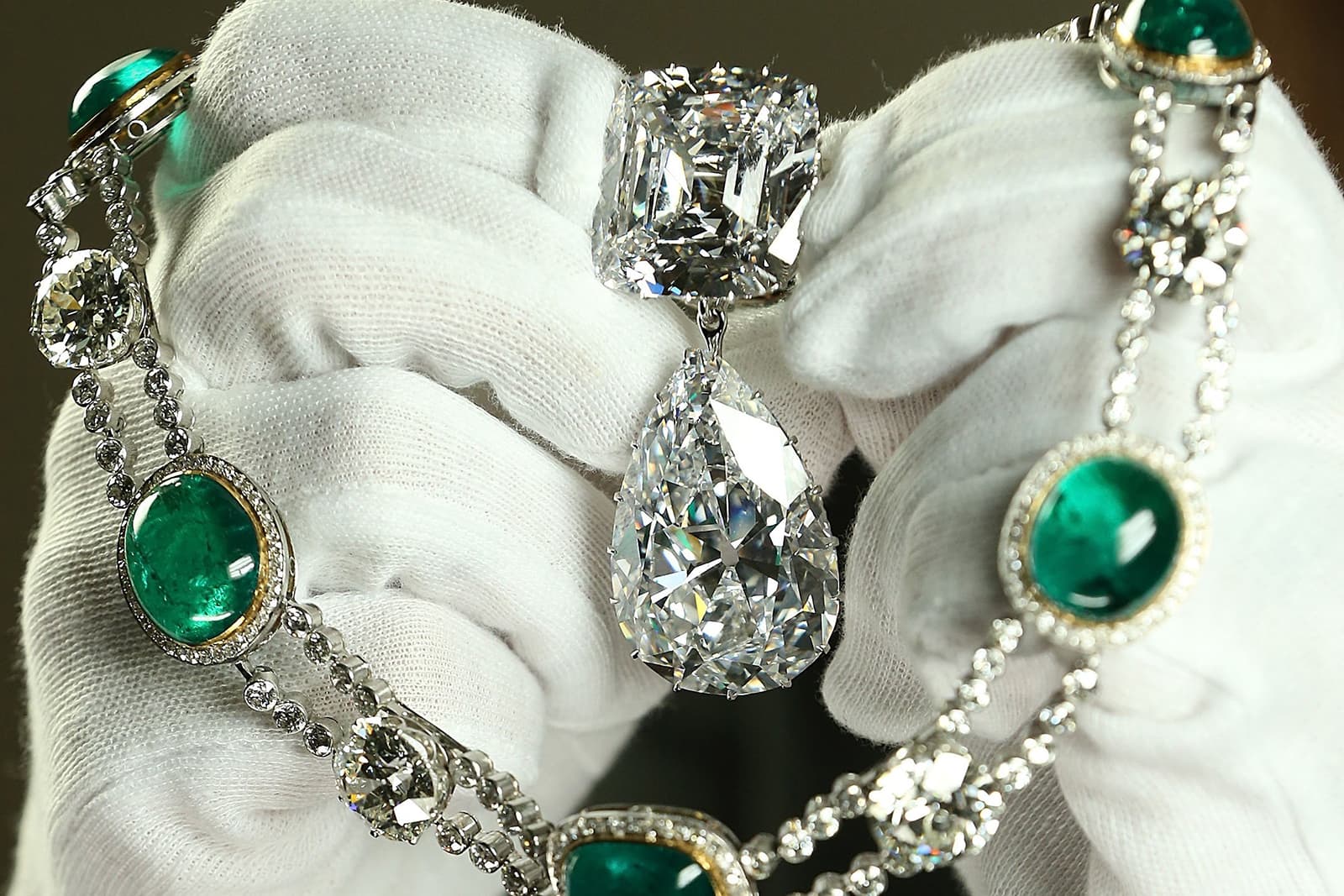
The Cullinan Diamonds brooch, Cullinan VII Delhi Durbar necklace and Cullinan pendant. Image by Samir Hussein
The Cartier Patiala Necklace
In 1928, the Cartier Jewellery House created a five-strand necklace for Maharaja Patiala – Bhupindar Singh, in the centre of which lies a sparkling yellow De Beers pear cut diamond with an impressive weight of 234.65 carats. However, this is not the only important stone in the necklace! Among the 2930 gems, with a total weight of slightly less than 1000 carats, one finds seven large diamonds weighing anything from 18 to 73 carats, as well as several Burmese rubies. The selection of the precious minerals and the production of the component jewellery took three years in total, but the time spent was evidently worth it – and as a result, a truly unique necklace came into being. Maharaja Bhupindar Singh went to all ceremonial events wearing the stunning piece. The last time this necklace was seen in a photograph was in 1941, being worn by the Maharaja’s son Yadavindra Singh. In about 1948, it disappeared entirely from the Patiala treasury. Hard times had come for the rulers of India, and in many instances they were compelled to part with their jewellery. Some of the component parts of the Patiala necklace began to appear at various auctions, and representatives of the Cartier house set about restoring the lost piece of jewellery. Unfortunately, the seven best gems could not be located, and so in the restored version they have been replaced with synthetic models. If all the stones were in place, then the estimated worth of the necklace would be in excess of $30 million!
The Henckel von Donnersmarck Tiara
The tiara is invariably one of the possessions of any member of the nobility, and there are a large number of them in the collections of many heads of state. So why is it that I decided to tell the story of the Henckel von Donnersmarck tiara in particular? The reason is that this piece of jewellery set a world record for being the most valuable tiara ever sold at auction. Bidding took place in 2011 at Sotheby’s, where the near priceless piece sold for no less than $12.7 million. The tiara was created in 1900 by order of the German prince Guido Henkel von Donnersmarck. He was perhaps the richest man in Germany at the time, and he had the tiara made with 11 hand-chosen Colombian emeralds weighing over 500 carats as a gift for his second wife, the Russian aristocrat Katarina Sleptsova! Unfortunately, the name of the jeweller responsible for such a stunning work did not survive, but Sotheby’s auction house has suggested on the basis of an analysis of the Prince’s other jewellery that it may well have been Chaumet.
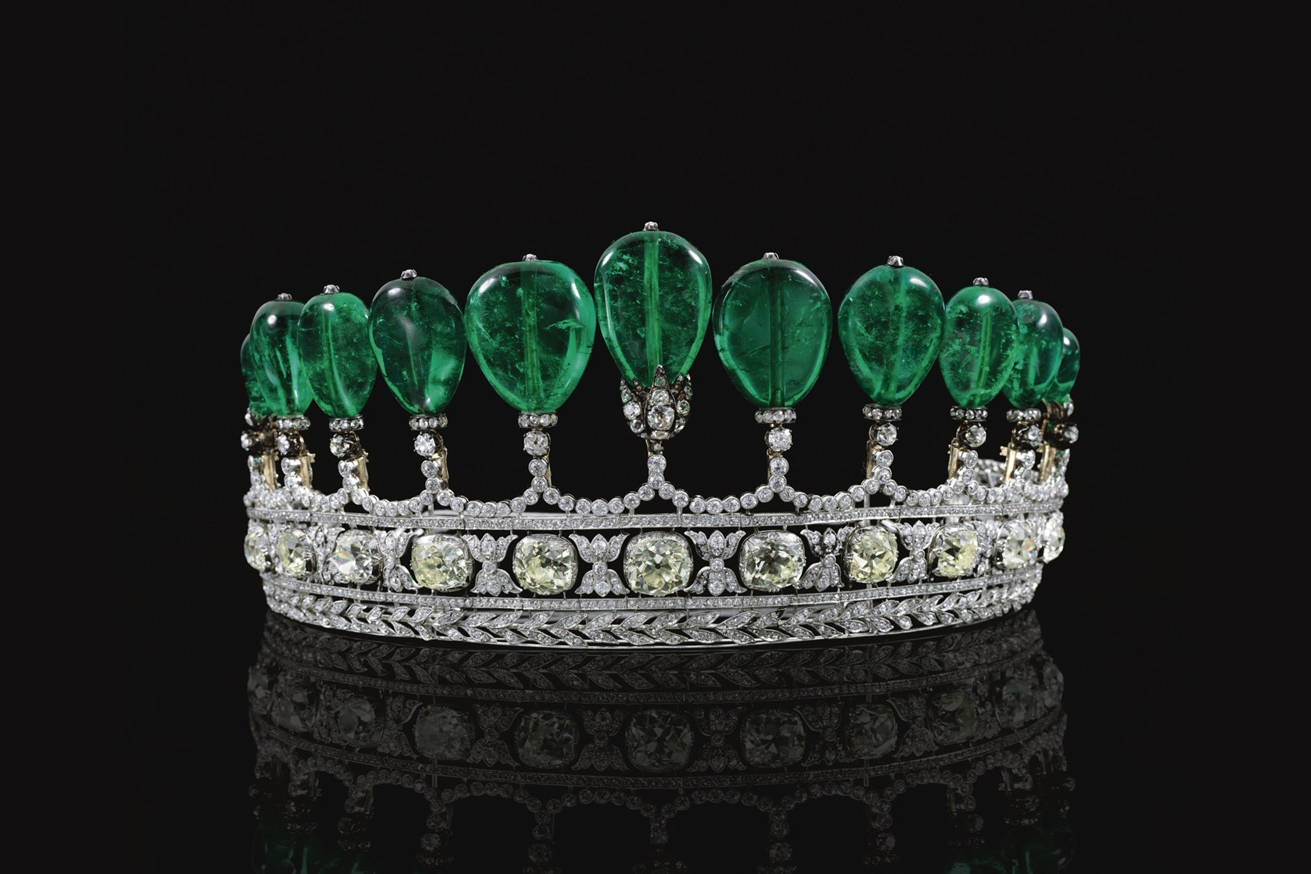
The Henckel Von Donnersmarck Tiara with approx. 500ct Colombian emeralds, colourless and yellow diamonds
The Hope Diamond
The gem, weighing 45.52 carats, got its name from the London banker Henry Thomas Hope, who bought it in 1824. But before its momentous christening, the stone already had a rich history: the diamond was stolen from Garde Meuble in Paris during the French revolution. When it was owned by the monarchy, it was referred to as the Crown’s Blue Diamond, the French Blue or Tavernier Blue. All of these naming variants are derived from the stone’s striking blue colour, which is found in just 0.02% of all diamonds. It is believed that this blue diamond was first imported into Europe by the French precious stone merchant Jean-Baptiste Tavernier. He bought the uncut diamond in 1666 during time spent travelling in India, and in 1668 Tavernier sold the treasure to King Louis XIV. Legend has it that the diamond was stolen by Tavernier from the eyes of a statue of a Hindu goddess and was therefore cursed. Studying the diamond’s story, it is easy to believe such a curse might be true: the diamond has been stolen a great number of times. This first happened in 1791 – and in the years that followed this first theft, it was likely recut into smaller diamonds. Many of the resultant diamonds’ owners have suffered fates themselves that are no less tragic. Since 1958, the Hope diamond has been on exhibition at the National Museum of Natural History in the United States.
The Pearl of La Peregrina (also known as the ‘Wandering Pearl’ or ‘The Wanderer’)
La Peregrina – the world’s largest natural pear-shaped sea pearl – weighs 55.95 carats. In the middle of the 16th century, a slave took the pearl out of the deep sea around the Pearl Islands, and he was immediately granted his freedom for his priceless find. The pearl was brought to Spain in 1579, and sold to the Spanish King Philip II (1527-1598). Beginning with Maria Tudor – Philip II’s wife – Spanish queens posed for ceremonial portraits in a dress that included La Peregrina.
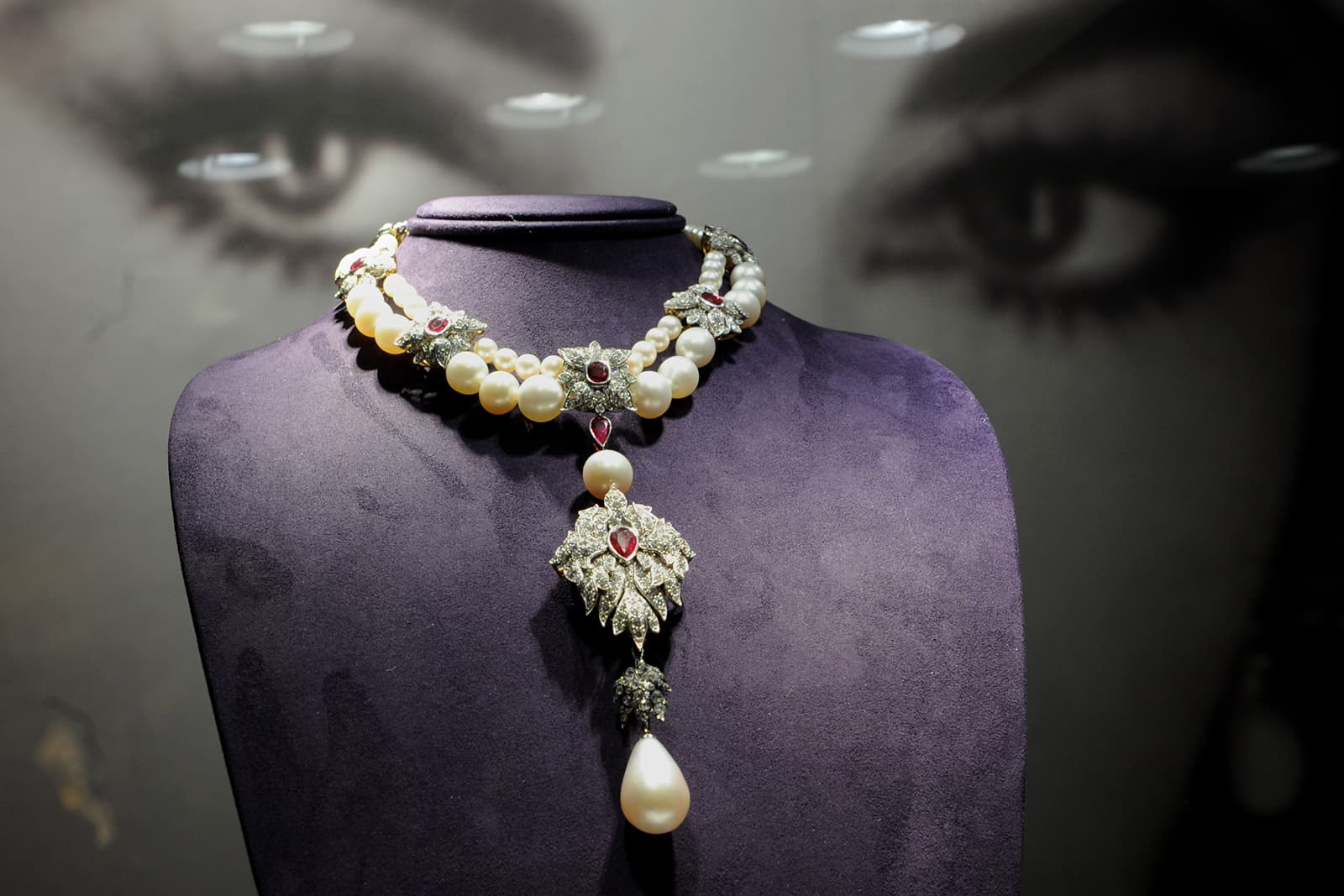
Elizabeth Taylor’s La Peregrina Pearl necklace by Cartier with 55.95ct pear shaped pearl, accenting pearls, diamonds, and rubies
Louis Napoleon, who would later become Emperor of France, eventually inherited the pearl. During his years of exile in England, Napoleon was forced to sell the Spanish relic to the Duke of Abercorn, a member of the Scottish Hamilton family. In the 21st century, the pearl remained in the public eye thanks to Elizabeth Taylor, who received the stunning gift from Richard Burton on Valentine’s Day. In 1969, the actor bought La Peregrina at Sotheby’s for $37,000, and in December 2011, the pearl appeared as part of the Elizabeth Taylor collection at Christie’s, where it was sold for a record price of more than $11 million.
Evidently, the lives of remarkable people are complemented by remarkable jewellery, jewellery that often enjoys equal renown or becomes even more famous than its owners. Fortunately, these can now be accessed, albeit only digitally and for educational purposes, by a wide audience, thanks to which we can marvel at unique gemstones and the virtuosic skills of history’s great jewellers.

WORDS
Katerina Perez is a jewellery insider, journalist and brand consultant with more than 15 years’ experience in the jewellery sector. Paris-based, Katerina has worked as a freelance journalist and content editor since 2011, writing articles for international publications. To share her jewellery knowledge and expertise, Katerina founded this website and launched her @katerina_perez Instagram in 2013.
